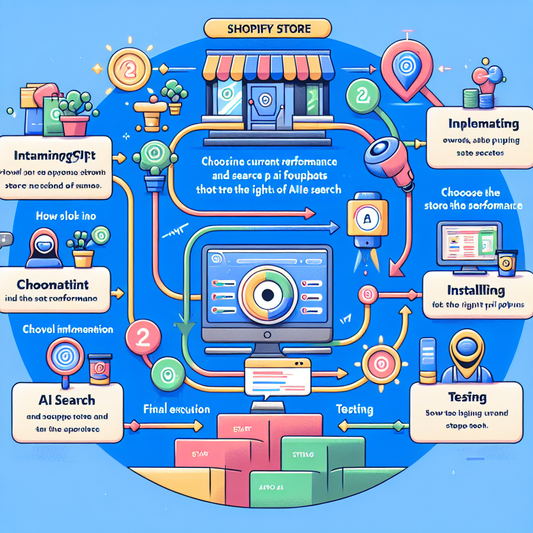
Optimizing your Shopify product pages can significantly boost your store's SEO performance.
Introduction: Why Product Page Optimization Matters
- Setting the Stage with Compelling Statistics Did you know that 93% of online experiences begin with a search engine? This statistic alone underscores the importance of optimizing your Shopify product pages for better SEO. In today's digital marketplace, visibility is everything. If your product pages aren't optimized, you're essentially invisible to potential customers.
- The Competitive Edge With over 4 million Shopify stores globally, standing out is crucial. Optimizing your product pages not only helps you rank higher in search results but also improves the user experience, leading to higher conversion rates. A well-optimized page can be the difference between a sale and a missed opportunity.
- Building Trust and Credibility SEO isn't just about search engines; it's about providing value to your customers. Well-optimized product pages that offer clear, concise, and relevant information help build trust. Customers are more likely to purchase when they feel informed and confident in their decision.
- Driving Organic Traffic Organic search is a major source of traffic for Shopify stores. By optimizing your product pages, you increase your chances of appearing in search engine results, driving more organic traffic to your site. This is not only cost-effective but also sustainable in the long run.
- Enhancing User Experience A seamless user experience is crucial for retaining customers. When product pages are optimized for SEO, they load faster, are easier to navigate, and provide valuable content—all of which contribute to a positive user experience. Happy customers are more likely to return and make repeat purchases.
Strategies for Effective Product Page Optimization
Article Topics:

1. Utilizing High-Quality Images and Alt Text
Images play a significant role in product pages. High-quality images can enhance user engagement and provide detailed views of your products. However, search engines can't 'see' images, so it's essential to use descriptive alt text. Alt text helps search engines understand what the image is about, improving your page's SEO.
2. Crafting Engaging and Keyword-Rich Product Descriptions
Your product description is not just a sales pitch—it's an opportunity to use keywords strategically. By including relevant keywords naturally within engaging product descriptions, you can improve search visibility while informing and persuading potential buyers.
3. Leveraging Customer Reviews for Credibility and Content
Customer reviews are powerful. They not only build trust with new customers but also provide fresh, user-generated content for your product pages. This content can have a positive impact on SEO by keeping your pages dynamic and relevant.
4. Optimizing Page Load Speed and Mobile Responsiveness
Page load speed is a ranking factor for search engines. Optimize images, use fast hosting, and minimize scripts to improve load times. Additionally, ensure your product pages are mobile-friendly. With more consumers shopping on their phones, mobile responsiveness is critical for SEO and user experience.
Key Takeaways for Better Shopify Product Page SEO

-
Optimize with the Customer in Mind
Always consider the customer's journey when optimizing product pages. Provide them with valuable information that guides their purchasing decision, which in turn, enhances your SEO strategy.
-
Balance Aesthetics with Functionality
While visually appealing product pages are important, they must also be functional and optimized for search engines. Balance aesthetics with SEO best practices to ensure your pages are both attractive and effective.
-
Continuously Monitor and Adjust
Customer reviews are powerful. They not only build trust with new customers but also provide fresh, user-generated content for your product pages. This content can have a positive impact on SEO by keeping your pages dynamic and relevant.
-
Leverage Shopify's Built-in Tools
Page load speed is a ranking factor for search engines. Optimize images, use fast hosting, and minimize scripts to improve load times. Additionally, ensure your product pages are mobile-friendly. With more consumers shopping on their phones, mobile responsiveness is critical for SEO and user experience.
-
Stay Informed on SEO Trends
SEO is an ever-evolving field. Keep up with the latest trends and updates to search engine algorithms to ensure your Shopify store remains competitive and well-optimized.
Boost your conversion rates with our powerful Shopify Public App by offering tiered pricing and volume discounts.





